¿Cuándo cambió EZGO a un sistema de 48 voltios?
EZGO ha sido durante mucho tiempo una marca de confianza en la industria de los carritos de golf, conocida por producir vehículos confiables y de alto rendimiento. Una de las mejoras más significativas de su historia fue la transición a un sistema de 48 voltios, que mejoró la eficiencia energética, la duración de la batería y el rendimiento general. Pero ¿cuándo exactamente cambió EZGO a un sistema de 48 voltios y cuáles fueron los motivos de este cambio? En este artículo, exploraremos la historia de esta transición, sus beneficios y su impacto en la industria de los carritos de golf.
- La evolución de los sistemas de baterías de EZGO
- ¿Cuándo cambió EZGO a un sistema de 48 voltios?
- ¿Por qué EZGO cambió a un sistema de 48 voltios?
- Comparación de sistemas de 36 y 48 voltios en carritos EZGO
- Cómo actualizar de un sistema de 36 voltios a uno de 48 voltios
La evolución de los sistemas de baterías de EZGO
Antes de analizar cuándo EZGO cambió a un sistema de 48 voltios, es importante comprender la evolución de su tecnología de baterías. Inicialmente, la mayoría de los carritos de golf, incluidos los de EZGO, funcionaban con un sistema de 36 voltios, que fue el estándar en la industria durante muchos años. Estos carritos de 36 voltios utilizaban seis baterías de plomo-ácido de 6 voltios, que proporcionaban una potencia decente, pero con algunas limitaciones de autonomía y eficiencia.
Los primeros días de los sistemas de baterías EZGO
En sus inicios, los carritos EZGO se diseñaron principalmente para campos de golf, donde los recorridos cortos y las necesidades de potencia moderada eran suficientes. Sin embargo, a medida que los carritos de golf se popularizaron para uso personal y comercial, aumentó la demanda de mayor rendimiento y mayor autonomía.
El sistema de 36 voltios se mantuvo común durante las décadas de 1980 y 1990, pero a medida que la tecnología avanzaba, EZGO reconoció la necesidad de una solución más potente y eficiente. Esto condujo a la introducción del sistema de 48 voltios, que pronto se convertiría en el estándar de la industria.
>>Vea también Comprensión de la corriente, la potencia y las aplicaciones de 240 voltios
¿Cuándo cambió EZGO a un sistema de 48 voltios?
EZGO realizó la transición a un sistema de 48 voltios a mediados y finales de la década de 1990, con los primeros modelos disponibles entre 1995 y 1997. Esta transición supuso una mejora significativa en potencia y eficiencia, ofreciendo a los usuarios una mayor autonomía y un mejor par motor.
Modelos clave que incorporaron el sistema de 48 voltios
- 1995 – EZGO presenta el primer modelo de 48 V
- EZGO lanzó su primer modelo con sistema de 48 voltios para competir con otras marcas como Club Car, que ya había introducido carritos de 48 V.
- Estos modelos se utilizaron principalmente en áreas de alta demanda, como complejos turísticos y vehículos de transporte personal.
- 1997 – EZGO amplía la oferta de sistemas de 48 voltios
- Se agregaron más modelos a la línea, incluidos carros para flotas y para uso personal.
- Las configuraciones de batería mejoradas mejoraron la longevidad y la confiabilidad.
- Década de 2000: Transición completa al sistema de 48 voltios
- A principios de la década de 2000, EZGO había integrado completamente el sistema de 48 voltios en la mayoría de sus modelos de carritos eléctricos, alejándose de los sistemas de 36 V.
¿Por qué EZGO cambió a un sistema de 48 voltios?
El cambio a un sistema de 48 voltios estuvo impulsado por varios factores clave que beneficiaron tanto a los fabricantes como a los usuarios.
1. Mayor potencia y rendimiento
Una de las principales razones por las que EZGO cambió a un sistema de 48 voltios fue para aumentar la potencia de sus carritos de golf. Un voltaje más alto permite una mayor eficiencia en los motores eléctricos, lo que significa:
- Aceleración más rápida
- Mejor par para subir pendientes
- Rendimiento más suave en diversos terrenos.
2. Mayor eficiencia de la batería
Un sistema de 48 voltios requiere menos amperaje para producir la misma potencia que un sistema de 36 voltios. Esto significa:
- Menor generación de calor, lo que prolonga la vida útil de la batería.
- Funcionamiento más eficiente energéticamente
- Mayor autonomía de conducción con una sola carga
3. Mayor duración y vida útil de la batería
Con la transición a sistemas de 48 voltios, los carritos EZGO experimentaron una menor carga en las baterías individuales. Esto resultó en:
- Menor desgaste de la batería
- Ciclos de batería más largos antes de necesitar reemplazo
- Menores costos de mantenimiento a lo largo del tiempo
4. Estándares de la industria y competencia
A finales de la década de 1990, otros fabricantes de carritos de golf como Club Car y Yamaha ya habían introducido sus propios sistemas de 48 voltios. Para mantenerse competitivo, EZGO tuvo que adoptar la tecnología y mejorarla.
5. Beneficios ambientales
Un sistema de 48 voltios funciona de manera más eficiente, lo que:
- Reduce el consumo general de energía
- Reduce el impacto ambiental de la producción y eliminación de baterías.
- Cumple con los estándares energéticos en evolución para vehículos eléctricos.
Comparación de sistemas de 36 y 48 voltios en carritos EZGO
Para comprender las ventajas del sistema de 48 voltios de EZGO, es útil compararlo con el sistema anterior de 36 voltios.
| Característica | Sistema de 36 voltios | Sistema de 48 voltios |
|---------|---------------|---------------|
| Potencia de salida | Menor | Mayor |
| Par motor | Más débil en cuestas | Más fuerte en pendientes |
| Eficiencia de la batería | Consume más amperios | Utiliza menos amperios para la misma salida |
| Longevidad | Menor duración de la batería | Mayor duración de la batería |
| Tiempo de carga | Más largo | Más corto |
| Peso | Más ligero | Un poco más pesado |
| Uso | Trabajo ligero | Uso pesado y personal |
>>Vea también Formas seguras y efectivas de cargar su hoverboard
Cómo actualizar de un sistema de 36 voltios a uno de 48 voltios
Si tiene un carrito EZGO antiguo con un sistema de 36 voltios, actualizarlo a uno de 48 voltios puede mejorar significativamente el rendimiento. Aquí le explicamos cómo hacerlo:
1. Reemplace la batería
Necesitará seis baterías de 8 voltios o cuatro baterías de 12 voltios para crear un sistema de 48 V.
2. Actualice el motor y el controlador
Es posible que un motor de 36 V no soporte bien un sistema de 48 voltios, por lo que se recomienda actualizar a un motor y controlador de mayor voltaje.
3. Instale un cargador de 48 V
Un cargador de 36 V no funcionará con un sistema de 48 voltios, por lo que deberá comprar un cargador compatible.
4. Verifique el solenoide y los cables
Asegúrese de que el solenoide, el cableado y otros componentes eléctricos puedan soportar el aumento de voltaje.
EZGO realizó la transición a un sistema de 48 voltios entre 1995 y 1997, con una integración completa a principios de la década del 2000. Este cambio trajo consigo mejoras significativas en potencia, eficiencia y duración de la batería, haciendo que sus carritos de golf fueran más fiables y capaces que nunca. El sistema de 48 voltios se convirtió en el nuevo estándar de la industria, ayudando a EZGO a mantenerse competitivo y a ofrecer a sus clientes una experiencia de conducción superior.
Si tiene un carrito EZGO de 36 V, actualizarlo a un sistema de 48 voltios puede mejorar drásticamente su rendimiento y vida útil. Ya sea propietario de un campo de golf, administrador de un resort o simplemente alguien que disfruta de usar un carrito EZGO como transporte personal, comprender las ventajas de un sistema de 48 voltios es crucial para tomar decisiones informadas sobre su vehículo.

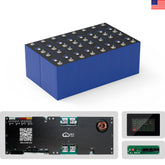

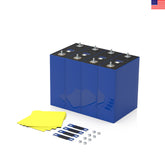
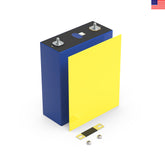
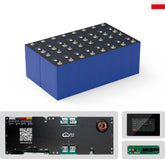

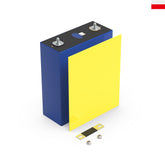

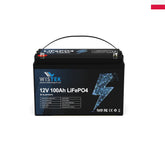
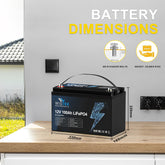



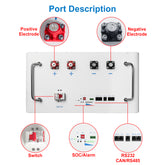
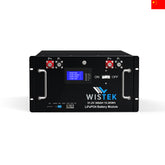
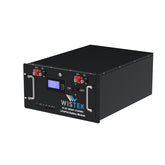


Leave a comment
All blog comments are checked prior to publishing